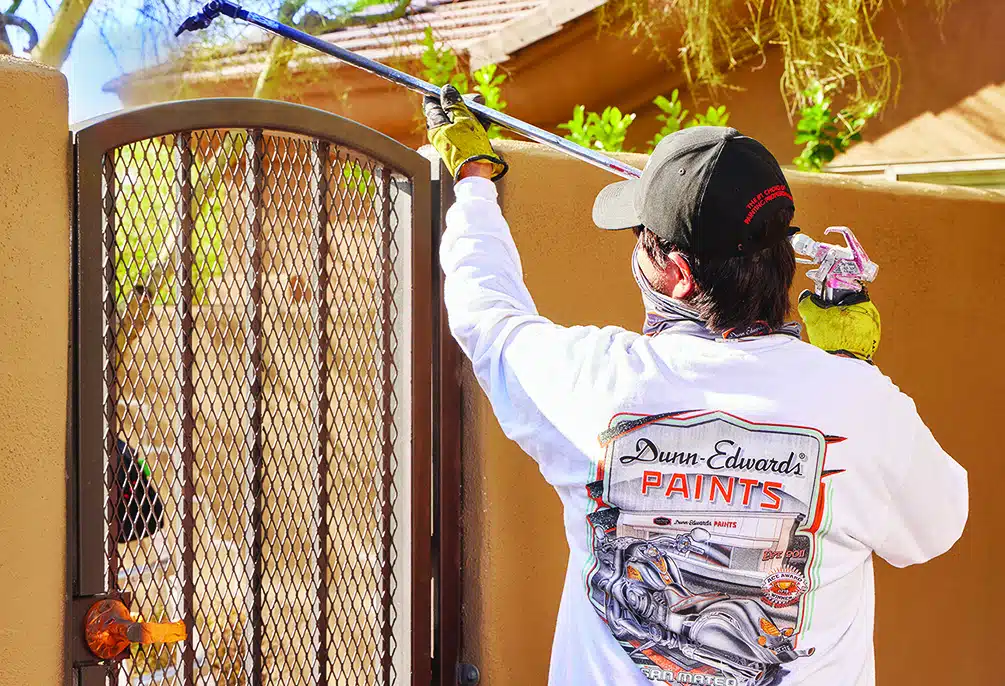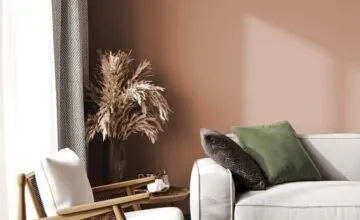Understanding Color, Part 1
10/28/2020 | Dunn Edwards |
The Psychological Powers of Color

Color. It surrounds us constantly, yet how often do we notice how it makes us feel? Color psychology asserts that every hue impacts us emotionally and, sometimes, even physically. While our experiences partially explain why we are drawn to some shades and repelled by others — on a larger scale — colors communicate meanings that resonate across the globe.
This is the first in a two-part series to expand your knowledge of color: how it influences us, as well as help you discover which hues will be most effective in your communities and properties. We take inspiration from our recently released 2021 Color Trends report, “An Exhibition of Color,” which consists of five unique stories — Querencia, Solibre, Hanabi, Lagom, and Moonwake. These narratives mirror the challenges we’ve faced in 2020, as well as our search for substance and truth in the new year.
Red
Of all the colors in the visible spectrum, red is definitively the fiercest, as well as the most complicated. It’s known for boosting confidence, energy, and power — as well as putting the appetite into overdrive (fun fact: red is the most-used color in restaurants!); inspiring spirited conversation; and igniting passion and romance! While all that fiery energy may overwhelm spaces meant for leisure, keep in mind that there’s a deeper, warmer side of red — like Merlot (DE5055), that fosters a sophisticated, yet welcoming, impression.
Yellow
This fun, uplifting color lights up a room like a ray of sunshine and evokes feelings of joy, happiness, and optimism, as well as improves thinking and metabolism. Bold yellows are a dynamic choice for communal areas, while lighter, playful shades such as Spring Buttercup (DE5310) can visually expand and vitalize tighter quarters.
Blue
Taking things down a notch is calming, relaxing blue. Blue nurtures a trusting, secure and stable mindset — lowering blood pressure, respiration, and heart rate, as well as enhancing concentration. Its balancing effects are especially beneficial in quiet rooms. In social spots, choosing warmer, softer blues will avoid the “coldness” of lighter blues. Deeper blues, on the other hand, may cause a sense of melancholy. If you prefer something in the middle, perhaps Blue Chip (DE5867) is the perfect fit!


Green
Blending the tranquility of blue and the exuberance of yellow, green is a universal go-to color that works just about anywhere. Its natural, restorative effects can cool small areas, encourage comfort and conversation throughout a property, and create peace and harmony in bedrooms or bathrooms. In addition, yellow-greens or blue-greens — Navajo Turquoise (DET 547), for example — energize workout and outdoor facilities, as well as bolster concentration and focus in offices.
Purple
In its deeper variations (such as aubergine), purple awakens our mysterious, dramatic, and sophisticated sides — and empowers us to embrace our intuition, wisdom, and creativity. Mid- to light-purples, including lavender and amethyst, radiate peaceful qualities akin to blue… without the risk of feeling chilly. Even better? Hues like Plum Passion (DE5006) are rumored to inspire a tender (and romantic!) environment in the bedroom (which means it may not be the best option for the leasing office)!
Orange
Orange: Lively. Enthusiastic. Fun. Think of orange as “Dug” from the movie “Up.” It’s the color of happiness and optimism, inspires thoughts of joy and playfulness. While intense oranges may be over the top for meditative spaces, a fun-loving citrus-like Orange Daylily (DE5145) — is just the ticket for community hot-spots, as it fuels lively, friendly interaction.
Pink
Emanating thoughts of warmth, serenity, and comfort, pink is strongly connected to feminine-leaning qualities such as sensitivity and softness — which makes some consider it too “girly”). But don’t put pink in a corner! It may be Barbie’s signature color but — from blush to brilliant fuchsia — this versatile shade radiates vibrant, refreshing, and creative vibes. Consider cheeky hues such as Pink Glamour (DE5103), which is absolutely fabulous in a range of spaces, infusing bathrooms, bedrooms, and living rooms with beauty, brains, and an extra helping of self-confident sass. Take that, Ken!

Neutrals (Brown, Gray, White, and Black)
While all-out-neutral palettes trend up and down, their greatest attribute is their adaptability — allowing you to add daring accent colors to stir up an energy or take it down a notch with a softer hue.
Brown
Dark browns — including dark mocha, pecan, and chocolate — are as cozy, genuine, and grounding (and delicious!) as their namesakes. Like the Earth itself, deep hues such as Folklore (DET413) emanate warmth, bestowing a sense of consistency, stillness, and resilience. In its lighter variations — such as beige, taupe, tan — brown is ideal for communal spaces (foyers, hallways, meeting rooms, etc.)
Gray
When it comes to gray’s emotional impact, the question is simple: “How do you want to feel?” Peaceful? Focused? Reserved? Welcoming? Gray can do it all. A true-color chameleon, gray blends beautifully with just about any color — it all depends on the gray’s temperature. Pair warm grays with other hospitable hues (such as pink and burgundy) for an inviting, lively ambiance. while cool tones (such as pale green and light turquoise) to create a personal nirvana. For a dramatic yet classic look, try Dolphin Tales (DET600).
White
White typically conveys positive emotions — safety, purity, freshness, and cleanliness. It’s the color of perfection and new beginnings. It pairs with just about everything — especially blues, reds, and blacks. And, depending on the white’s undertone and interior lighting, it can make other colors pop. For example, Cotton Ball (DEW387) beautifully highlights pinks, purples, greens, and more.
Black
Of course, we can’t forget black, the most powerful colors you can use. Some love it. Some are suspicious of it. Either way, moderation is the key, otherwise, your “Matrix”-inspired vision, might look more like Voldemort’s lair. Utilized as an accent, black can produce an elegant and sophisticated feel, as well as have a grounding effect. If you’re looking for a hint of color in your black, consider Nightfall (DE5804), which boasts just the right amount of green-blue.

In next month’s article, Part 2 of “Understanding Color,” we will take our new knowledge and address which hues will work best in various spaces!





















